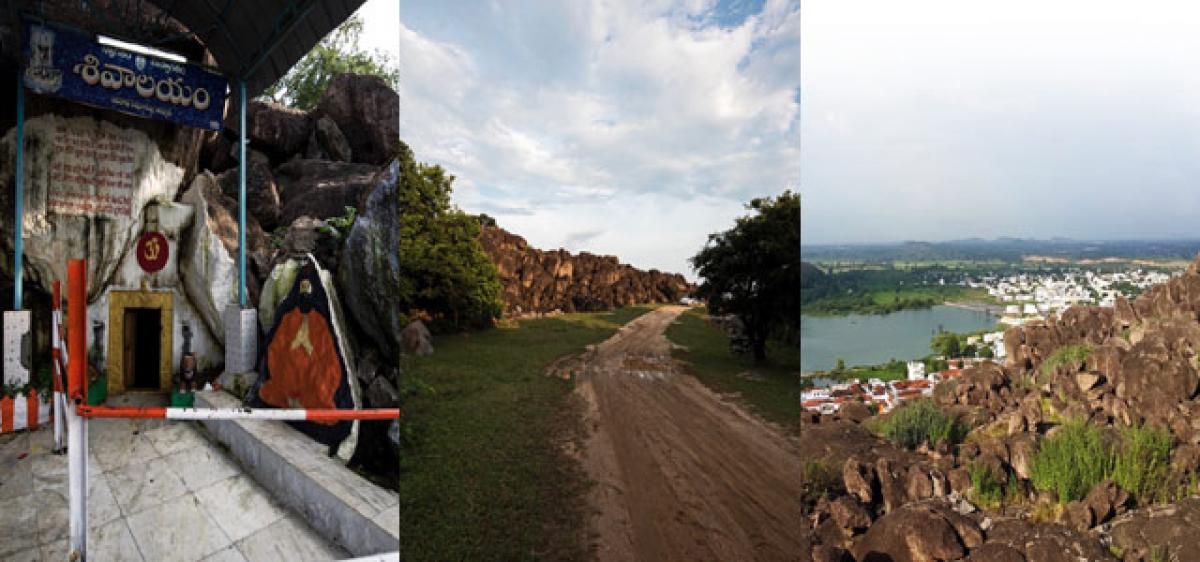Live
- Sudanese army recaptures capital of Sinnar State in central Sudan
- Kishkindha Kaandam Review: Some movies prove not to compromise in having a good cinematic experience and this is one of them
- Son-rise: Hemant Soren grows taller as tribal leader, makes father proud
- ISL 2024-25: 10-man NorthEast United FC hold on to take three points vs Punjab FC
- BGT 2024-25: Jaiswal’s application, commitment to form a partnership was so impressive, says Gilchrist
- BGT 2024-25: Personally, I am very happy with my performance, says Harshit Rana
- Pakistan's Lahore remains world's most polluted city despite light drizzle
- Asha Nautiyal retains Kedarnath for BJP, to be back as MLA after 12 years
- India leads world in science, innovation research: Minister
- Flash flood in Indonesia's South Tapanuli claims two lives
Just In

As you drive along the highway from Nizamabad to Armoor, you will go past a long stretch of hills that look like they were made by someone, who has artistically and quite laboriously piled up boulders to form them.
In Nizamabad, there is a temple, though not quite as legendary as the Dichpally Ramalayam, but is just as historic as the former, with an extra edge of adventure added to it. This is the Navanathula Siddulagutta - a series of cave temples inside the rock formations of Armoor
As you drive along the highway from Nizamabad to Armoor, you will go past a long stretch of hills that look like they were made by someone, who has artistically and quite laboriously piled up boulders to form them.
These are the Armoor Rock Formations. Naturally weathered rocks crafted by Mother Nature for over millions of years. They are so distinctively striking that they are but a natural stopover for anyone driving that way and rightly so.
Sitting in a cave somewhere in those rocks is the Navanatha Siddheswara Temple also known as Navanthula Siddulagutta; “gutta” for cave and Navanatha Siddhas for the sages who are believed to still reside in them.
Fifteen years ago a ghat road was built through the rock formation, leading straight to Siddulagutta. There is also a walkway from the Gol Bungalow for pilgrims wishing to do the climb up to the temple by foot.
Inside these caves is a Shiva Temple, where the Shiva Lingam is said to be swaymbhu or self-manifested. It is said that the lingam here has been in worship since the Tretayuga. The entrance to this cave temple is a door that is barely three feet, and once you crouch through it, the cave opens up and skylight filters in. You walk along in the designated route through the caves and you will come across many little temples in interconnected passageways. Even one dedicated to the Goddess Durga.
Just outside the exit point of this narrow cave is a Ramalayam and the temple tank, Jeeva Koneru. Legend has it that during the construction of the temple, when this tank was dug, it failed to well up with water.
So, Rampriyadas Maharaj, the person who built the temple took up a tapasaya that lasted forty-one days, at the end of which Lord Rama himself came into his dreams. This water now is believed possess curative powers and is quite popular with pilgrims making the journey to be healed.
Otherwise quiet and forgotten, the temple gets crowded on Sri Rama Navami. Work is currently underway to build facilities to accommodate these devotees and build other temples around it on the flat ground between the rocks.
Further up the rocks, the summit flattens out into a breezy plateau. The village of Armoor with its houses of redbrick roofs and setting sun glinting off the black rocks lend the landscape such beauty, that it has actually been the location for many a movie shoots. And that also makes this perfect for that evening family picnic.
One can also round out this day trip with a visit to the Pochampadu Dam or the Sri Rama Sagar Project, as it is known. Widely accepted to be the lifeline of Northern Telangana, this dam on the Godavari River, is a sight to behold when its forty-two flood gates are open.
Or extend the road trip to a full weekend getaway to Nizamabad. Explore the Dichpally Ramalayam, which is a Ramayana place. On his way to wage war on Ravana, Lord Rama is said to have stopped here and stayed a fortnight. On this hillock today stands the famous temple.
Fact File
Armoor is around 37 kilometres from the town of Nizamabad, along the intersection of NH7 and NH16. Pochampadu Dam is another 30 kilometres from here. This distance can be covered in approximately three and a half hours from Hyderabad.

© 2024 Hyderabad Media House Limited/The Hans India. All rights reserved. Powered by hocalwire.com







